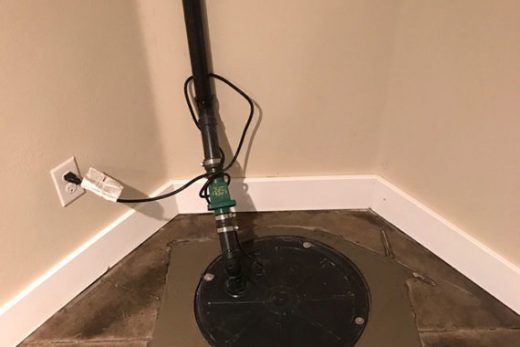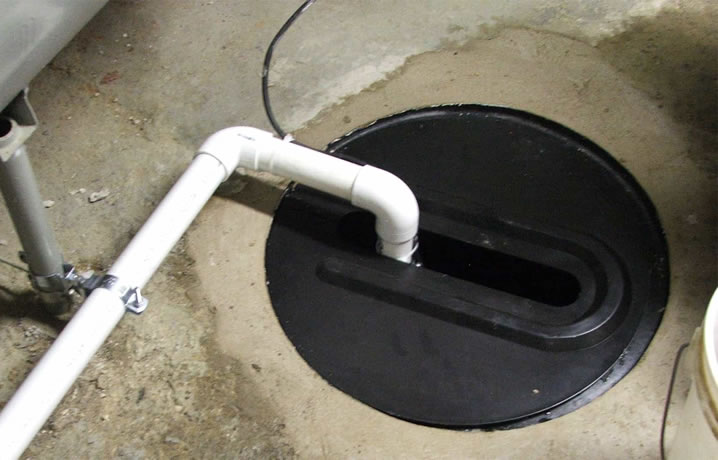Almost everyone has got his or her own thinking about Cleaning & Maintenance Tips for Your Home's Sump Pump.

Sump pumps are critical parts in several homes, specifically in locations vulnerable to flooding or excessive dampness. They assist prevent water damage by efficiently getting rid of excess water from basements or crawl spaces. Nonetheless, like any other appliance, sump pumps need regular upkeep to guarantee they operate effectively when needed the most. Cleansing your sump pump is an important part of its maintenance, and recognizing how to do it correctly can save you from pricey repair work and possible catastrophes.
Introduction
Preserving a clean sump pump is essential for its appropriate performance and longevity. Disregarding this vital job can result in obstructions, breakdowns, and eventually, water damages to your home. Consequently, learning exactly how to clean up a sump pump is critical for homeowners who count on these gadgets to maintain their cellars completely dry and safeguarded.
Recognizing the Sump Pump
Prior to diving right into the cleansing procedure, it's essential to have a fundamental understanding of how a sump pump works. Generally installed in a pit or basin listed below the cellar floor, a sump pump includes several essential parts, including a pump, a float switch, and a discharge pipe. When water gathers in the pit, the float switch activates the pump, which then pumps the water out through the discharge pipeline, far from the building's foundation.
Indicators of a Dirty Sump Pump
Understanding when your sump pump needs cleansing is important for avoiding potential malfunctions. Some common indicators that suggest an unclean sump pump consist of weird noises throughout procedure, lowered water circulation, and noticeable particles in the pit. If you observe any of these signs and symptoms, it's necessary to cleanse your sump pump promptly to avoid any type of more concerns.
Preparing for Cleaning
Before you begin cleansing your sump pump, it's important to take some safety and security preventative measures. Start by shutting off the power to the pump to stay clear of any type of electric mishaps. Additionally, use appropriate safety gear, such as handwear covers and safety glasses, to safeguard on your own from dirt, particles, and potential microorganisms.
Detailed Guide to Cleaning Up a Sump Pump
Shutting down the Power
Begin by disconnecting the power supply to the sump pump to avoid any accidents while cleansing.
Getting Rid Of Particles and Dust
Use a pail or an inside story to eliminate any visible particles, dirt, or sediment from the sump pit. Dispose of the particles effectively to avoid it from clogging the pump or the discharge pipeline.
Cleaning up the Pump and Float Switch Over
When the pit is clear of particles, very carefully remove the pump from the pit. Evaluate the pump and the float switch for any kind of indications of damages or wear. Utilize a soft brush or cloth to clean up the surface areas and eliminate any kind of built up crud.
Flushing the System
After cleansing the pump and float switch, purge the sump pit with clean water to eliminate any kind of continuing to be dust or debris. This will certainly aid make sure that the pump operates smoothly and efficiently.
Checking for Proper Performance
Prior to re-installing the pump, do a fast test to guarantee that the float button turns on the pump properly. Pour some water right into the sump pit and observe the pump's procedure. If whatever is functioning appropriately, you can reconstruct the pump and reconnect the power supply.
Upkeep Tips to Keep Your Sump Pump Clean
In addition to regular cleaning, there are a number of maintenance ideas you can follow to maintain your sump pump in optimal condition:
Conclusion
Cleansing your sump pump is an important facet of its maintenance and makes sure that it operates successfully when you require it the most. By complying with the actions outlined in this guide and including normal maintenance into your regimen, you can expand the lifespan of your sump pump and safeguard your home from water damage.
6 STEPS ON HOW TO CLEAN A SUMP PUMP PROPERLY
UNDERSTANDING SUMP PUMPS
Your sump pump plays a crucial role in protecting your home by managing and removing excess water. It primarily functions as a “shield”, guarding your basement against the damaging effects of water accumulation. The pump is housed in a sump pit in the lowest part of your basement, and its job is to pump out any water that collects there.
During heavy rainfalls or when snow melts rapidly, water can infiltrate your basement, posing potential risks like flooding, structural damage, and harmful mold growth. Here, the sump pump springs into action, pumping out the intruding water and directing it away from your home.
SAFETY FIRST
Before cleaning, remember to prioritize safety. Disconnect the sump pump from the power source to prevent any accidental electric shocks. Also, wear sturdy gloves to protect your hands from any sharp or dirty components within the pump.
REMOVE THE SUMP PUMP
After ensuring your safety, the next step is to remove the sump pump from its pit. Doing this might require careful maneuvering as you don’t want to damage any pump components. Once removed, clean the sump pit to remove any accumulated debris or sludge.
INSPECT THE PUMP
Inspect the pump for any visible signs of wear or damage. Check the power cord, float switch, and impeller housing. If any components look worn out or damaged, consider replacing them to ensure optimal performance.
CLEAN THE PUMP
Thoroughly clean the pump with warm, soapy water. Make sure to rid it of any dirt, gravel, or other debris that might impede its performance. You can use a toothbrush to clean the small, hard-to-reach parts of the pump.
REINSTALL THE SUMP PUMP
Reinstall the pump into the sump pit Make sure it’s positioned correctly to remove the water effectively Once it’s back in place, reconnect it to the power source TEST THE PUMP
Finally, pour some water into the pit to ensure the pump works correctly. It should start automatically and begin pumping out the water; if it doesn’t, check the power source and the positioning of the pump.
Remember, while cleaning your sump pump is an essential part of home maintenance, hiring a professional plumber for a thorough inspection and cleaning at least once a year is also important. This will ensure that your pump is in optimal condition, ready to protect your home from potential water damage.
BEST PRACTICES FOR CLEANING SUMP PUMP DISCHARGE PIPES
Regular Inspection: Regularly inspect your discharge pipes, especially during heavy rainfall or snowmelt periods. Look for any signs of blockage or damage. Early detection of problems can prevent serious issues down the line. Periodic Cleaning: Over time, sediment and debris can accumulate in the discharge pipes, impeding the flow of water. Regular cleaning helps keep the pipes clear and functioning efficiently. You can use a high-pressure water jet to effectively clean the pipes. Insulation During Winter: In colder climates, discharge pipes can freeze, blocking the outflow of water. Protect your discharge pipes from freezing temperatures by insulating them with foam pipe insulation. This will ensure the sump pump can continue to discharge water even in freezing conditions. Proper Positioning: The discharge pipe should be positioned to direct water away from your home’s foundation. Improper positioning can lead to water seeping back into the basement. Ensure the pipe is long enough and angled correctly. Installation of a Check Valve: A check valve prevents water from flowing back into your sump pit after the pump has pushed it out. Installing a check valve helps maintain the efficiency of your sump pump and reduces the risk of flooding. Minimize Pipe Turns: Every curve or turn in the discharge pipe can decrease the efficiency of water flow. By minimizing turns and bends in your discharge pipe, you can increase the efficiency of your sump pump. https://www.fullspeedplumbing.com/how-to-clean-a-sump-pump-properly9999/

I recently found that entry about Cleaning & Maintenance Tips for Your Home's Sump Pump while doing a search on the web. Are you aware of somebody who is sincerely interested in the topic? Be sure promote it. Many thanks for your time. Come back soon.
Call Today